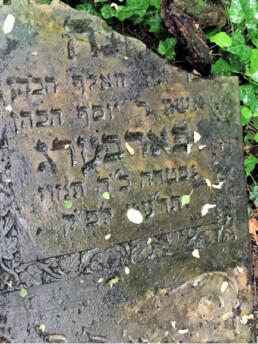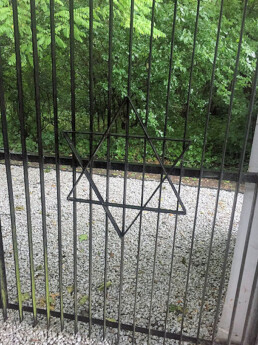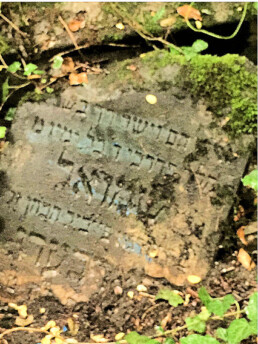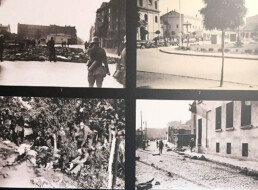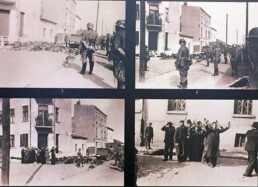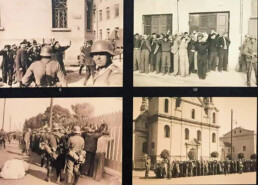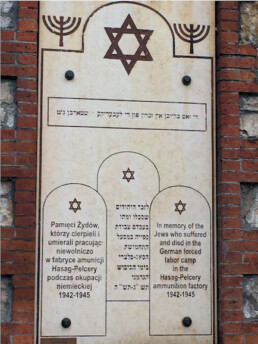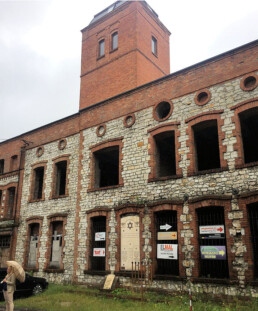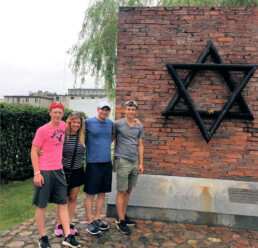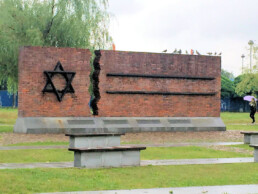My Częstochowa
by STEVE FORBERG (Toronto, Canada)
BACKGROUND
My grandfather, David Forberg, was born in 1922 in Częstochowa, Poland. He passed away in 2011.
Through the years, as a grandchild of two Holocaust Survivors, I heard many stories and real-life accounts from my grandparents, Syma and David. My grandparents met, during the war, in the HASAG-Pelcery forced labour camp in Częstochowa. Many of the stories, which I had heard, were about “the old country” and about life before the war with their families.
I had never been to Częstochowa nor has any member of my extended family been back since my grandfather was liberated in 1945. He never wanted to return and discouraged his children, also, from setting foot back in the country that changed his life forever.
They say, you can’t go back to a place which you never left. But, for me, I was going BACK as Częstochowa was where my roots began.
David Forberg had four Children – my father Joe , Honey (Silverberg) Esther (Michaels) and Bill Forberg. Together, they have ten grandchildren and twenty great-grandchildren to David Forberg.
I felt honored to be the first one to report back to my family on my experience.
OUR VISIT TO CZĘSTOCHOWA
I, Steven Forberg, at the age of forty-three, was traveling in Poland, together with my wife Sue and two sons, Josh 16 and Ryan 14 – with Sue’s family, whose father is from Poland. For his 75th birthday, for ten days, we all went to Warsaw, Kraków and Krynica. Since I would be so close, I decided that I would arrange a day, from Kraków, to make a side-trip, with my wife and kids, to the town about which I’d heard so much – where the Forbergs began -Częstochowa.
Through my Aunt Esther, I was connected to Alon Goldman, with whom I spoke with about my plans, prior to leaving Toronto, Canada. Alon put me in touch with Małgorzata and Marek Małecki, who live in Częstochowa and provide tours for people, who come back to visit the old town. I really didn’t know what to go see or what I wanted to see, other than the Jewish Cemetery and the address of where my grandfather had lived. I ended up seeing much much more.
I went with an open mind – more like a sponge as I wanted to soak it all in. I really wanted to see it from the perspective of how, I think, my grandfather’s life was before 1939 and how he lived.
Where did he live ? Where did he have his bar- mitzvah ? Where did his family go to synagogue ? What was the town like that where he would run around on the streets as a young boy during his brief time of innocence.
On 21st July 2017, at 10:40am, I was greeted by Malgorzata and Marek at the Częstochowa railway station . This wasn’t a day for good weather as it was pouring rain all day long.
We got into the car and our first stop was the Jewish Cemetery. I had visions of a typical cemetery but, when we arrived there, I knew that this was far from any typical cemetery. The street that led us to the entrance of the cemetery was hidden and far removed from the main streets. The cemetery entrance was set back and it appeared to me that this cemetery doesn’t get many visitors.
We exited the car into the pouring rain, with three umbrellas for the six of us. We begin to walk into the cemetery, down a path which seemed rather new, but which led us to the unkempt grounds . Marek led us off the path into the woods, towards four gravestones of members of my family. Now, picture walking through a forest with overgrown weeds and ivy everywhere.
We had to step over all this on the way to the tombstones we were in search of. We began to get wet, very wet. The insects biting us were plentiful. We were also walking over many broken tombstones, fallen tombstones and soaking wet soil as we finally arrived at Samuel and Hana Forberg’s tombstones.
For a moment, I stood in amazement, not knowing who these people were in relation to me. At that moment, it hit me that my Forberg family roots were here and not just my grandfather’s.
I paid my respects, took some photos and said a prayer over both headstones, accompanied by my sons who, with me, had braved the trek through the woods. It was pouring rain and it was too difficult and emotional to continue on to see the other two Forberg tombs. The rain was coming down so hard, I thought to myself that my grandfather was definitely looking over me and shedding his own tears with us or that he had wished that we didn’t go back and was trying to hurry us along.
We were take to an open area, where we were shown the grave site, where several mass executions committed by the Germans. So many thoughts were running through my mind. But the one which stood out most was, “What horror would my grandfather be feeling, when his town was being invaded by the Nazis ?”
Wet and cold, we got back into the car and headed to the Częstochowa Jewish Museum, where we could get out of the rain and dry off. As we drove from the Cemetery to the Museum, I looked out the window during the entire car ride (as I did much of the day). I was trying to imagine life here between 1939 and1945.
We parked and walked a short distance to the new Częstochowa Jewish Museum, which recently opened in September 2016. There was no big signage or anything to indicate that there was a museum on this street. Just a small plaque outside the main doors.
We entered and took a tour through the exhibition, which was very well done. It takes you through Jewish life in Częstochowa prior to 1939 and shows how vibrant it was when the town’s population was 130,000, of which 30% were Jews. From the Old Synagogue and New Synagogue, the Jewish district, the town’s Rabbi and so forth.
Then images of the Germans, in the town square, rounding up the Jews and herding them out. As you walk through the Museum, it brings you back in time to what life must have been like. How terrified my ancestors must have felt when the Nazis took over their city and all of Poland.
(Click on each of these three images to enlarge.)
In 1942, the Germans established a small munitions factory (HASAG-Pelcery) , which operated until liberation in January 1945.
I was in utter amazement when I arrived there and stood in the rain looking at this building. During the tour, Marek explained the use of these dilapidated buildings and what transpired inside them. We were told how the workers were brutally treated, poorly fed and how they lived in the worst of condition. Many had to walk miles daily, from the Częstochowa “Small Ghetto” to this slave labour work camp, where they made ammunition to kill other Jews.
The building was untouched since 1945. In three different languages, with the Star of David, there is a memorial plaque on the outside wall. The brick was dark and broken, the windows non-existent and the main entrance to this HASAG had broken glass windows, which resembled an Alfred Hitchcock horror film.
One side of the building still had, on it, the original fencing and barbed wire. Across the street, from the walls of horror, there were homes and people living a normal life, which amazed me. I looked into the building and could only imagine the conditions of the workers, the lack of food and water and the Germans, standing in the spot I stood during their time of power, and how angry I felt standing there.
I thought to myself, “Were my grandfather’s brothers and sisters, mother and father, aunts and uncles in this building?”. My grandfather was in the Skarżyko-Kamienna HASAG.
In January 1945, 5,000 slave labourers were liberated in January 1945 – the largest of any liberation in Poland and only 1,500 were Jews were from Częstochowa.
(Click on either image to enlarge.)
From there, we ventured to the banks of the Warta River, next to which stands the Częstochowa Jewish Memorial. To my shock and dismay, this memorial was only erected in 2009. What took so long ? The memorial is a brick wall – wide, tall, yet simple. The brick wall is broken into three sections. The first has two smooth railway tracks hung parallel against the brick wall, symbolising the smooth and simple life the Jews had before the war. The second has a split with missing bricks, which that resembles a crack in the wall, depicting the break of normal life which was the horror of the Holocaust. The last section is the Star of David made of old railway tracks and shows that Jewish life had survived the war and again is thriving today.
It was an eerie feeling to be standing in the same spot from where the trains had left to the death camp of Treblinka. Just a few yards away, stood a barricaded old railway house through which each Jew must have gone through prior to boarding the cattle cars to their deaths. How this building is still standing was a surprise to me but, if it’s a reminder of the hell that went on here, then it’s there for the world to see.
There’s a gravel path, where the old railway tracks once lay and from where the trains departed. In awe, I stood there, staring down this path, knowing that 40,000 Jews had left from this very spot – from Częstochowa to Treblinka.
The site also has an original German train manifest, enclosed in a glass, displaying the schedule for the deployment of the trains. A schedule of various locations, dated 1942, and this particular one, shows Częstochowa on the list with the final stop in Treblinka.
To visualise this made this Memorial even more chilling. The shock wasn’t just on my face, but on the faces of my two sons and my wife as I explained what had really transpired, in this very spot, just decades ago. My kids were well aware of stories of the Holocaust but, at that moment, they felt the reality of it all. It was very emotional for me knowing my grandfather was the only survivor and that his first wife and new-born child were on one of those trains to Treblinka and were murdered.
(Click on either image to enlarge.)
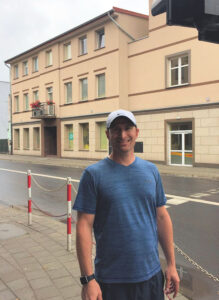 From there we toured the “Big Ghetto”and “Small Ghetto” areas. We walked and saw where the Old Synagogue once stood, which is now an abandoned lot. This first synagogue in Częstochowa was set ablaze by the Nazis. There was only one five-foot wall of the old stone synagogue still standing from before the war.
From there we toured the “Big Ghetto”and “Small Ghetto” areas. We walked and saw where the Old Synagogue once stood, which is now an abandoned lot. This first synagogue in Częstochowa was set ablaze by the Nazis. There was only one five-foot wall of the old stone synagogue still standing from before the war.
We walked to the Old Market Square (Stary Rynek), the small shops that aligned the main streets and to the address where my grandfather had once lived – ul. Warszawska 30/32 (pic left). Today, the address is a newly-renovated three-storey large building.
Many surrounding buildings were old. I stood there and stared at the building at the address I was given and looked around. I was in awe thinking that I was able to stand in the exact spot that my Zadie (grandfather) lived. I thought about all the terror, but the strength he had to have to survive. It was a miracle that he survived it all, but as my Zadie used to say, “It was all luck”.
We then saw the huge church where my grandfather was held during the first days of the Nazi occupation of Częstochowa. This was where he stayed for days, with no food or water, in unsanitary conditions. This is how the Nazis weakened and demoralised hundreds of Jews, so they couldn’t fight back. Again, I was imagining him, as a young man 17/18 years old, as his life was being turned upside down.
POSTSCRIPT
My time in Częstochowa gave life to the stories that I’d heard about before the war, but also to the horrific stories that my grandfather had told me about the Holocaust.
It was different in the sense that I could finally visualise a little of what took place. How much I wish he was still here with us so that I could tell him I was there, tell him what I thought, but more importantly, to ask what would he have thought.
I do understand though why he never wanted to return, as it would have opened so many old wounds that I am sure he would never have wanted to relive.
Was he a survivor ? Absolutely!! He was also the toughest man I ever met and, for him, to restart his life after the war, after all he went through, is a true result of his strength.
I miss my grandfather and think of him often
but, on that day, I know he was with me every step of the way.
Submitted by:
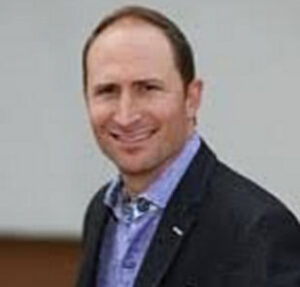
STEVE FORBERG

